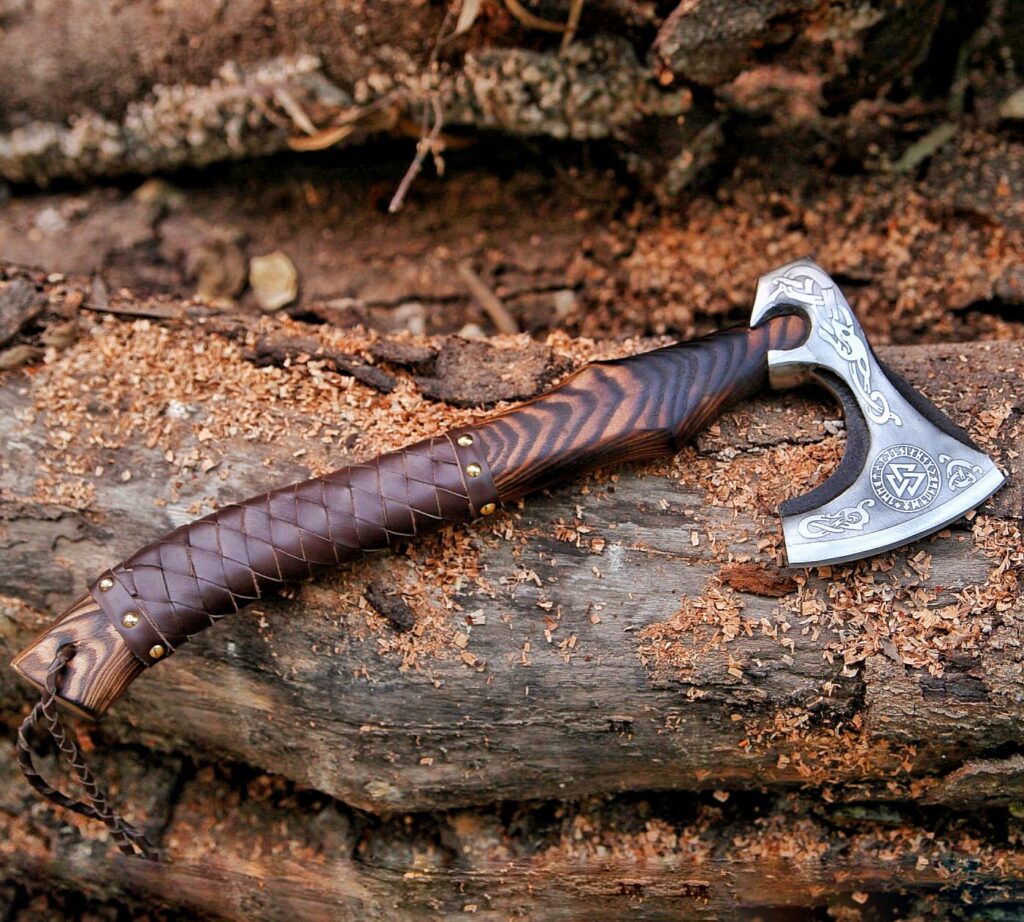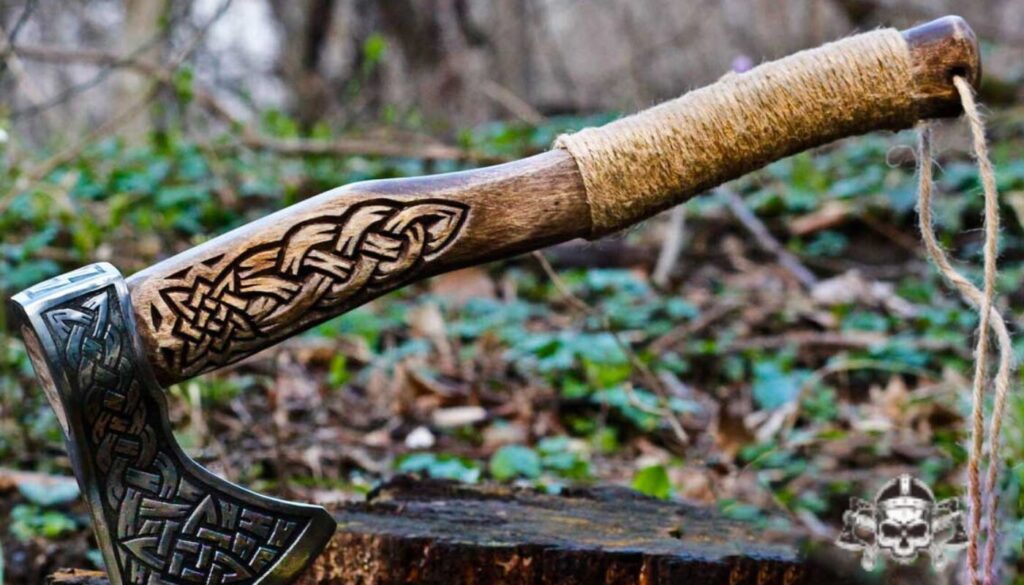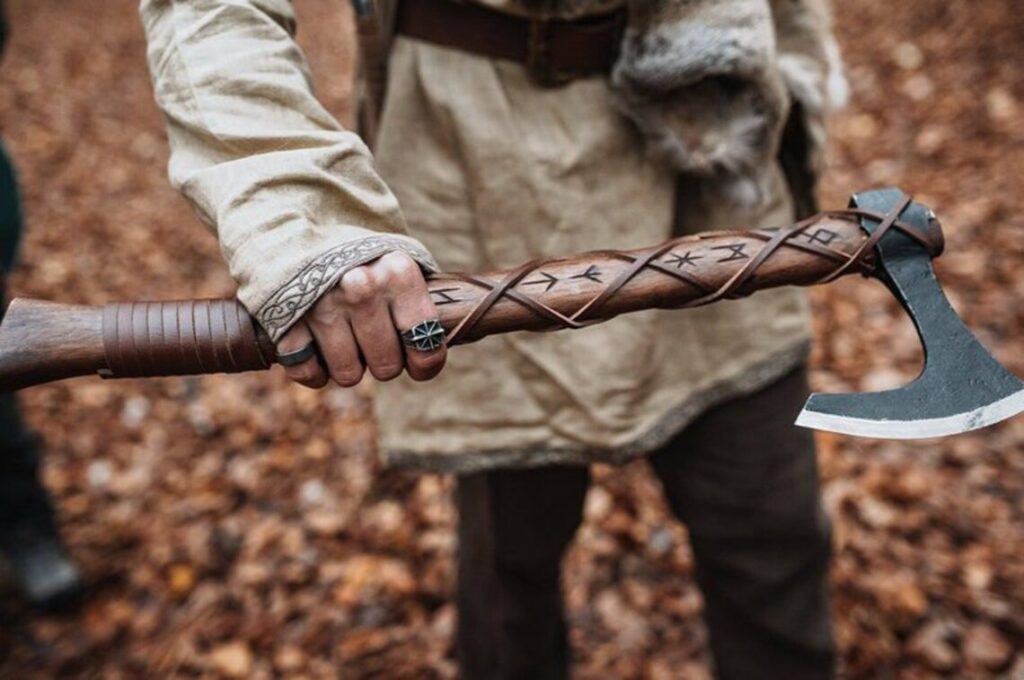- Free Shipping and 100 days free returns.
An enduring icon of the Viking Age, the Viking axe represents the Norse people’s extraordinary craftsmanship and martial ability. These axes demonstrated the talent and inventiveness of Viking blacksmiths and were more than just tools or weapons. A Viking warrior’s ax was a deadly weapon as well as a multipurpose instrument that was necessary for day-to-day survival.
The Viking Axe is an example of the skill and fighting ability of the Viking people. It was more than simply a weapon; it was a need for surviving and going about tasks daily. This blog highlights the expertise and inventiveness of Viking blacksmiths by delving into the painstaking process that goes into making these recognizable axes, from the forge to the battlefield.
During the Viking era, spanning from the late eighth to early eleventh centuries, axes were indispensable tools and weapons. The Vikings relied on their axes not only in battle but also in daily life. Among these, the best axe for splitting wood was essential for survival in harsh Scandinavian climates. Unlike swords, which were often reserved for the elite, the accessibility and effectiveness of the best axe for splitting wood made it a staple in every Viking household. This practicality in both combat and daily chores underscores the Viking axe’s crucial role in their society.

The main material used to make Viking axes was iron, although steel was eventually added as metallurgy advanced. Bog iron deposits, which were abundant in Scandinavian locations, provided the iron for melting. Blacksmiths combined iron and carbon to produce steel, a stronger and longer-lasting substance. Because of their strength and durability, hardwoods like ash and oak were frequently used to make handles. The fact that these resources were acquired locally or through trade routes illustrates how intertwined Viking society was with the global community.
Forging the Viking axe was a meticulous and skilled process, producing tools renowned for their effectiveness. Viking blacksmiths began by smelting and refining iron ore, creating the raw metal needed for their craft. Through precise heating and hammering, they shaped the metal into what would become the best splitting axe, perfect for both battles and daily chores. Adding carbon transformed the iron into steel, enhancing its durability and sharpness. The final tempering and quenching processes ensured that these axes were robust and reliable.
This craftsmanship resulted in not only the best splitting axe for everyday tasks but also the best axe for Viking warriors, combining utility and lethality. Each Viking axe, therefore, was a testament to the blacksmith’s expertise, tailored to meet the rigorous demands of both woodcutting and warfare.
Viking axes were made in a variety of designs, each with a distinct use. The long bottom blade of the bearded ax made it perfect for hooking and pulling during combat. The broad grip and massive blade of the Dane ax were intended for forceful, sweeping blows. Smaller axes were employed for daily chores like woodcutting and other more practical uses.
The skill of Viking smiths was demonstrated by the elaborate patterns and symbolic carvings that frequently adorned these axes. The weapon gained visual value from the ornamentation, which also gave it spiritual and cultural meaning.

Handle craftsmanship was crucial for Viking weapons, ensuring durability and effectiveness. Viking blacksmiths selected strong hardwoods like ash and oak for their handles, providing a reliable grip. These materials were meticulously shaped and fitted to the axe head, making Viking weapons both sturdy and comfortable to use. Techniques such as wedging and pinning secure the handle firmly, preventing it from loosening during combat or woodcutting. This attention to detail made Viking weapons some of the most reliable and formidable tools of their time.
The Viking smiths used exacting techniques to check the axes’ sharpness and strength. They put the blade through a variety of exercises, including striking shields and chopping wood, to make sure it could survive the rigors of combat. The axis was refined and adjusted as needed until it satisfied the strict requirements needed for fighting.
In battle, the Viking axe was a formidable counterpart to the Viking sword, offering distinct advantages. Its design allowed for powerful, cleaving strikes capable of bypassing shields and armor. Viking warriors wielding axes could hook and pull adversaries off balance, exploiting vulnerabilities. While the Viking sword was prized for its speed and versatility, the axe’s raw power and chopping ability made it a fearsome weapon on the battlefield.

A Viking axe usefulness depended on keeping it sharp and in good shape. Regular honing with leather straps and sharpening with whetstones were customs. Simple field adjustments, like tightening the head again or replacing a broken handle, kept the ax ready for fighting.
The legacy and influence of Viking craftsmanship extend far beyond the axe, notably impacting the design of the Viking knife. These knives, like Viking axes, were meticulously crafted, showcasing the same dedication to quality and durability. The techniques honed by Viking blacksmiths influenced future generations, making the Viking knife a lasting symbol of their skill. Today, modern reproductions of the Viking knife continue to honor this tradition, reflecting the enduring legacy of Viking craftsmanship and its significant historical influence.
The craftsmanship behind the Viking axe is a testament to the skill and innovation of Viking blacksmiths. From the selection of materials to the forging process and final testing, every step was undertaken with precision and care. The enduring legacy of the Viking axe, both in historical contexts and modern interpretations, highlights its importance as a symbol of Viking culture and a masterpiece of ancient craftsmanship.